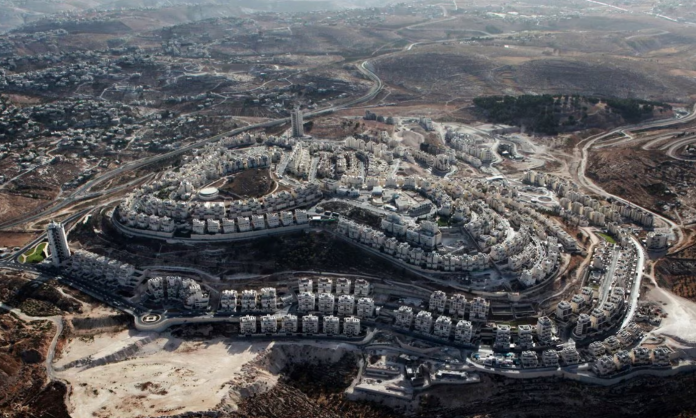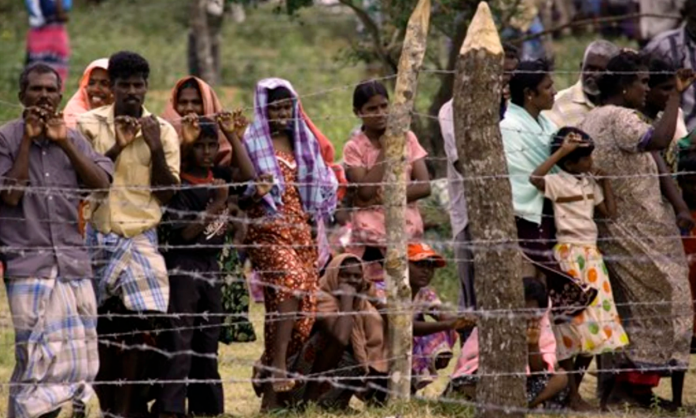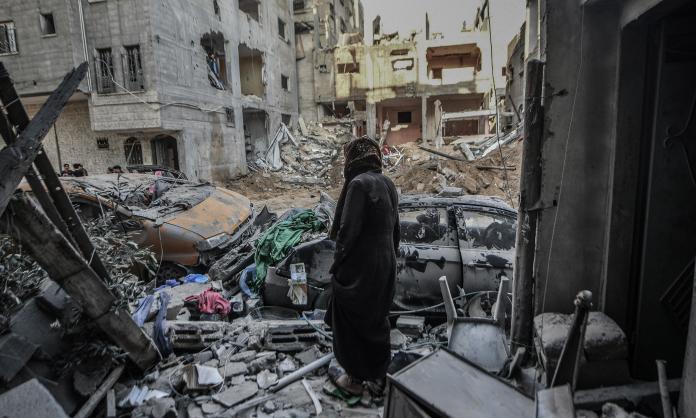“You are being invited to help make history ... it doesn’t involve Africa, but a piece of Asia Minor; not Englishmen, but Jews ... How, then, do I happen to turn to you since this is an out-of-the-way matter for you? How indeed? Because it is something colonial.”
—Theodore Herzl, a founder of Zionism, to Cecil Rhodes, founder of Rhodesia.
Since its inception in the late nineteenth century, Zionism—the political movement to establish a Jewish homeland—has been a colonial project. Leading figures of the Zionist movement such as Theodore Herzl looked to the major imperialist powers of the time to gain backing for a Jewish-only state in Palestine. But the project of creating such a state faced an inconvenient obstacle: the existing Arab population.
In the early twentieth century, high rates of immigration were relied on to try to create a Jewish majority in the area. But immigration wasn’t enough—there were some 1.2 million Arab inhabitants of Palestine, but by 1946 there were just 600,000 Jewish people. The Zionists needed a solution to this “demographic problem” if they were to create a decisive Jewish majority.
A mass expulsion, known as the Nakba (“catastrophe” in English), took place in 1948, when Zionist militias such as the Haganah and the Irgun massacred thousands and forced more than a million Arabs from their homes as they seized or destroyed more than 500 villages.
By 1949, Israel had taken control of nearly 80 percent of Palestine, an area far greater than the 54 percent allocated to the new state in the 1947 UN partition plan. The Nakba resulted in 700,000 Arabs fleeing to neighbouring countries and to Gaza. Many of the families displaced to Gaza remain there to this day. Of the territory’s 2.3 million inhabitants, an estimated 1.7 million are refugees and their descendants from what is now Israel, according to the United Nations Relief and Works Agency.
To create a Jewish ethnostate, the Zionist project excluded the remaining Arabs from the Israeli economy. The central trade union body, the Histadrut, vital to laying the foundations of the country, played a key role in constructing a Jewish-only labour force.
Israel’s colonial project relied heavily on the efforts of the Jewish population. This was sometimes dressed up in socialist language, exemplified by the collective settler movement of the kibbutzim—small agricultural cooperatives promoted as egalitarian communities free from capitalist exploitation. The concrete walls, barbed wire and armed settlers of the kibbutzim played an indispensable role in expanding the territory under Israel’s control. Despite their utopian image, the kibbutzim were essentially fortified outposts of the Israeli settler state.
The socialist colouring of the early settler movement was a useful ideological tool to convince Jewish people that a better life could be built in Israel and appealed to the socialist or labour Zionist world views of many European Jews. It was also a practical solution to the weakness of the local Jewish capitalist class in Palestine, which did not have the power, let alone the military, to lead a top-down expansionist project.
Since the 1967 Six Day War—a pivotal moment when Israel proved its military strength by defeating a coalition of Arab states and seizing the Gaza Strip, the Sinai peninsula and the Golan Heights—there have been debates within the Israeli ruling class over the preferred approach to dealing with the large Arab populations in the occupied territories.
Until 1993, the main approach was war. But sections of the labour Zionist movement, more concerned with upholding Israel’s claim to represent democracy in the region, advocated what they described as a more “peaceful” solution to the demographic problem. This perspective became a reality through the Oslo Accords.
The Oslo Accords came after the defeat of a wave of Palestinian resistance in the late 1980s, called the First Intifada. They were touted as a historic movement towards “peace” in the region. In exchange for Israeli withdrawal from Gaza and from sections of the West Bank, the Palestinian leadership would acknowledge and accept Israel’s claim to all the land within the so-called Green Line—the de facto borders of the state from 1949 until the 1967 war.
The negotiated settlement of Oslo became possible only because the Palestinian leadership was willing to make deals with Israel in exchange for control over a nominally independent Palestinian mini-state. The outcome was a further division of Palestinian land. The West Bank was splintered into zones of control designated Areas A, B and C.
Areas A and B are, in some way, under the control of the Palestinian Authority. Divided into more than 100 enclaves, only Area A (which comprises around 18 percent of the West Bank) is under the full control of the Palestinian Authority. Area B (around 22 percent of the West Bank) is under Palestinian civil control, but Israeli security control, meaning Israeli troops permanently stationed. Area C, which makes up about 60 percent of the West Bank, is under complete Israeli control. It is the only contiguous territory.
The splintering of the West Bank into hundreds of enclaves was part of a strategy to shatter any hope of a unified Palestinian state across any area of historic Palestine. So, despite many expressing hope in the “peace” process, little change came from the negotiations. Israel continued steadily to confiscate Palestinian land through illegal settlements, and life for the inhabitants of Gaza and the West Bank did not improve.
What the Oslo process actually facilitated was the turning of the Palestinian leadership into little more than a subcontractor of Israeli terror. Since the “peace” talks, the Palestinian Authority has continuously subordinated the Palestinian liberation movement to its strategy of negotiations: repressing protests, kidnapping, torturing and even killing anti-occupation activists, and aligning itself with surrounding Arab states that do nothing more than rhetorically support the Palestinians.
This has led to the de-fanging of the Palestinian liberation movement while Israel has ramped up its efforts to create a Jewish state across the whole of Palestine. The expansion of settlements during and after the Oslo years went alongside the construction of hundreds of kilometres of “bypass roads”, accessible only to Israelis, which cut through and further divided Palestinian land. In the 2000s, Israel expanded its occupation by building a 700-kilometre apartheid wall, severing Palestinian villages from vital agricultural land.
Israel has demolished thousands of Palestinian homes, replacing them with Israeli settlements. Currently, there are nearly half a million Israelis living in West Bank settlements.
Whipping up a rabid settler population pursuing a “from below” approach to colonisation has also created a considerable base for far-right politics in Israel and pulled Israeli society to the right for decades.
Mainstream Israeli politicians are more and more openly justifying the illegal settlements in the West Bank. This year, Prime Minister Benjamin Netanyahu’s far-right finance minister, Bezalel Smotrich, was granted sweeping powers to bypass the six-stage process previously required to construct an illegal settlement. This has already resulted in an expansion of the settlements, thousands of new homes being constructed.
Settler violence against Palestinians in the West Bank has been aided and abetted by the state for decades. There has, however, been a significant escalation since 7 October. Israel’s fascist minister for national security, Itamar Ben-Gvir, a long-time supporter of vigilante settler violence, has announced that weapons, including 10,000 assault rifles, will be handed out to volunteer militias.
East Jerusalem, occupied since 1967 and in effect annexed in 1980, is a focal point of the Israeli state’s plans—it is central to the Zionist goal of creating Eretz (greater) Israel. To Zionists, Eretz Israel means the wholesale destruction of any Palestinian state, alongside the expulsion of its inhabitants. To this day, the majority of inhabitants of East Jerusalem are Arab. Zionists maintain that an undivided, Jewish Jerusalem should be the capital of Eretz Israel. To this end, the Israeli state has undertaken a concerted project to undermine Palestinian life in the city.
This has not gone unchallenged. Mass evictions in the Sheikh Jarrah neighbourhood, announced in 2021, were the spark that ignited a major uprising across all of historic Palestine, including within the 1948 borders of Israel.
Yet the logic of the Israeli project is constant expansion. Its goal is Jewish supremacy in all areas from the Jordan River to the Mediterranean Sea.







